PretensT
Tensegrity is a special kind of structure made of push and pull.
Project maintained by elastic-interval Hosted on GitHub Pages — Theme by mattgraham
Easy does it
A couple of years ago I built my first 30-push tensegrity sphere but an important part of this PretensT project is not only that interesting structures get built, but also that the building of them gets easier, faster, and more flexible.
I got to thinking how it might work if I could combine the convenient innovation from more recently, the push bolt, and then also to actually boil it down to one single element for construction.
In this way I’m actually no longer pre-fabricating the whole tension network but instead arriving at a module which contains both compression and tension, and then connecting these together instead.
Just one element
The element needed to build a tensegrity sphere is a kind of “bow” with tension and compression, but with the two exchanged in a way.

Instead of having the compression bend and the tension being drawn back as in the bow above, we have the compression remaining straight and the tension bending (around the sphere shape shortly!)

I can make this kind of element really easily now that I can use push bolts with everything else exactly the same as before.
Each element consists of an aluminum tube, two push bolts, and three segments of cord joined by four rings. We are going to leave all the rings in place, so we actually have double the number of rings now.
The new feature that now comes in to play is that this is now all we need.

Mass production
It’s all fine to have nicely distilled the sphere into one single “bow” element, but that does mean that we need to have quite a number of them, so I set out on my customary mass production process.
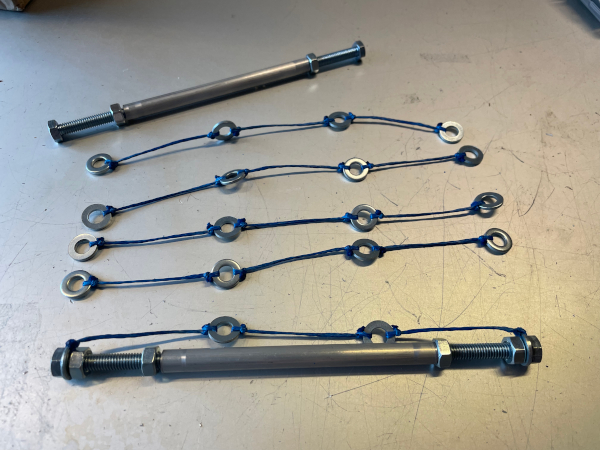
There’s no math in this one, because the struts with push bolts are extensible. We just have to have the cord cover approximately one third of the strut length.
By adjusting the nuts we can make the element tight and loose, so it simply has to work in the sphere context if we adjust to the right strut length.
My high-tech cord preparation device has to be set at the right distance to create proper segments.
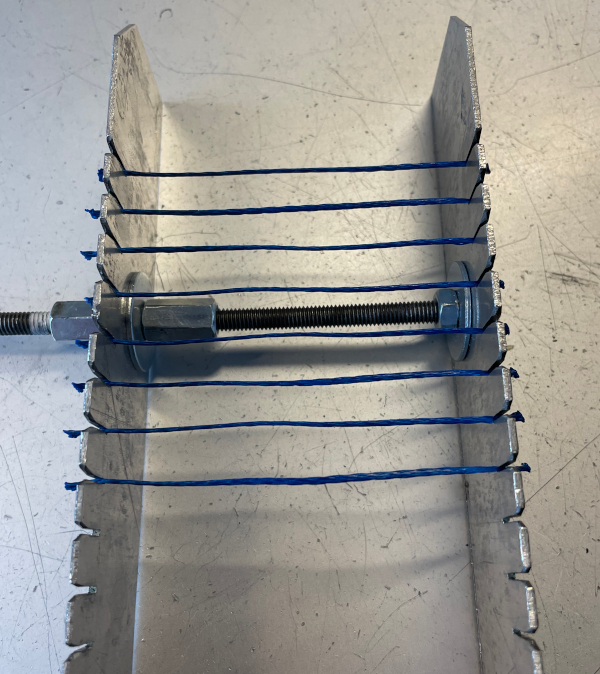
Quite a number of nuts and rings have to be collected.
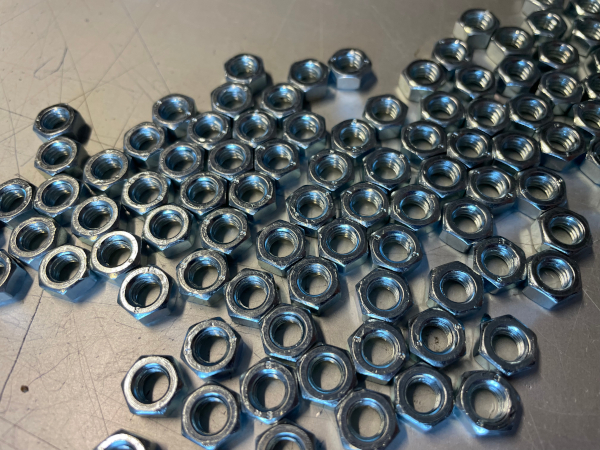

In total 30 tubes and 60 bolts of course.
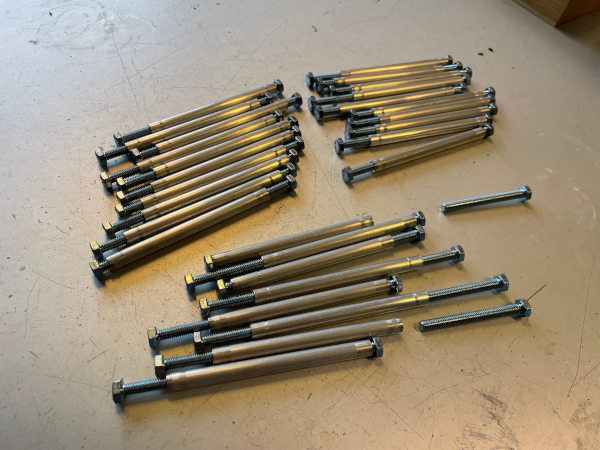
Easy Assembly
Now the fun part begins.
Since we have rings in two places on the cord, we can just insert neighboring push bolts!
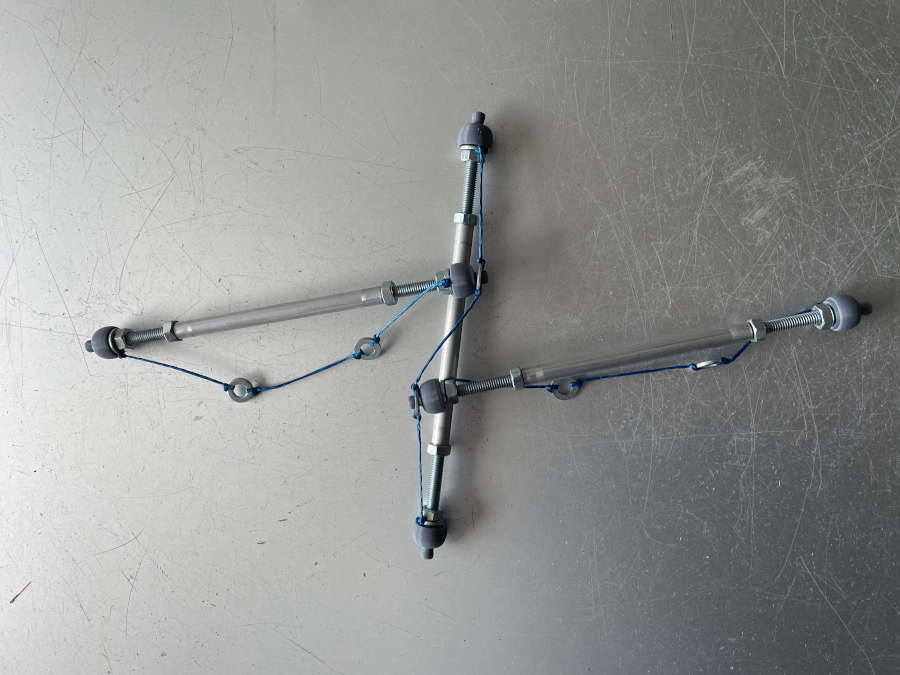
It only takes minutes to put together the first pentagon of tension-compression elements.
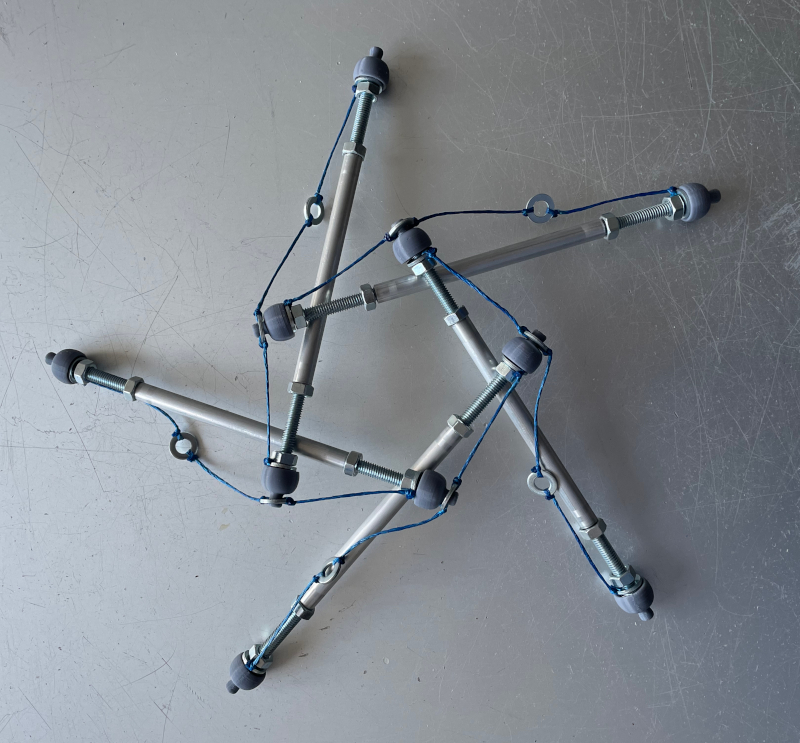
Turning each of the elements which fan out into part of a new triangle with more struts really begins to show the curvature of the sphere that is starting to appear.

It’s really a quick process to snap these elements together and when you finally get to the last element you can see the complete sphere.
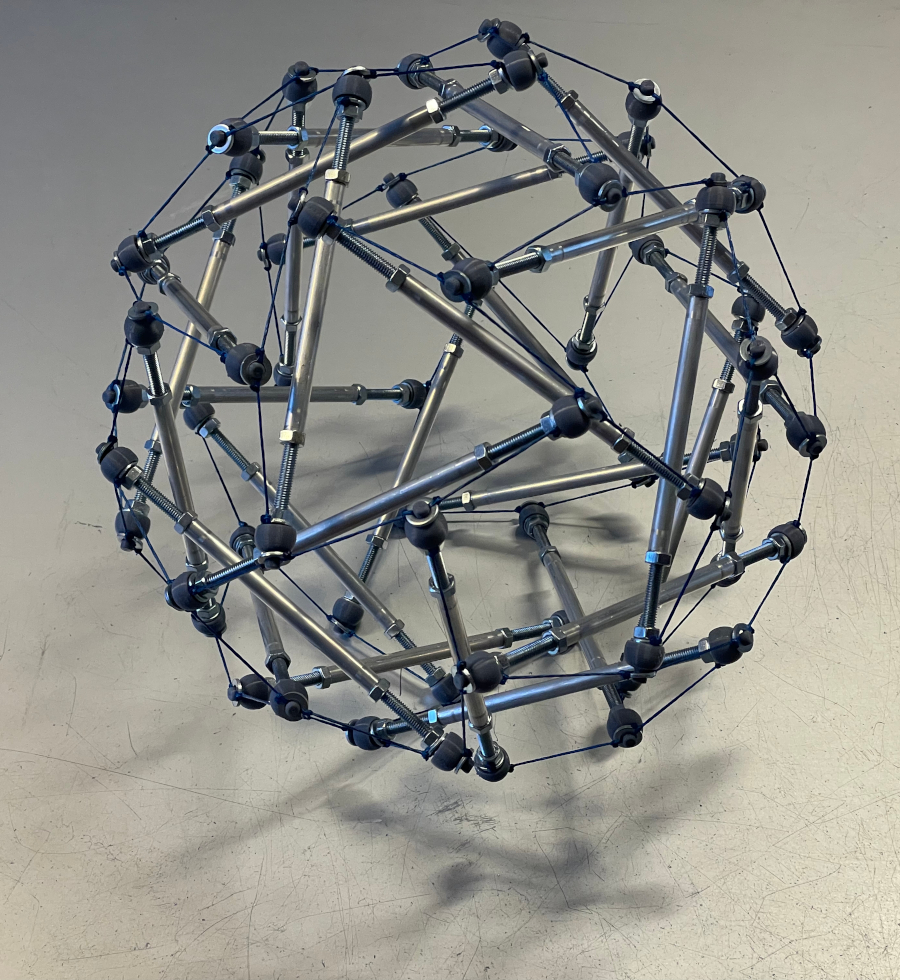
At first it is of course very slack, a lot like maybe a half-flat soccer ball, but if you’ve hung around this site for a while you know that all that’s necessary is turning nuts from this point to make a very tight soccer ball indeed.
Conclusion
By bringing the push bolts into a project that I had done some time ago, and leaving extra rings on the cords, I was able to create elements which allowed for a tensegrity sphere to be assembled literally in a half hour.
When it is tightened, you can see that it even bounces.
Bouncing 30 Strut Tensegrity from Get Pretenst on Vimeo.
But actually the most interesting thing about this sphere is that I was able to completely disassemble it afterwards!
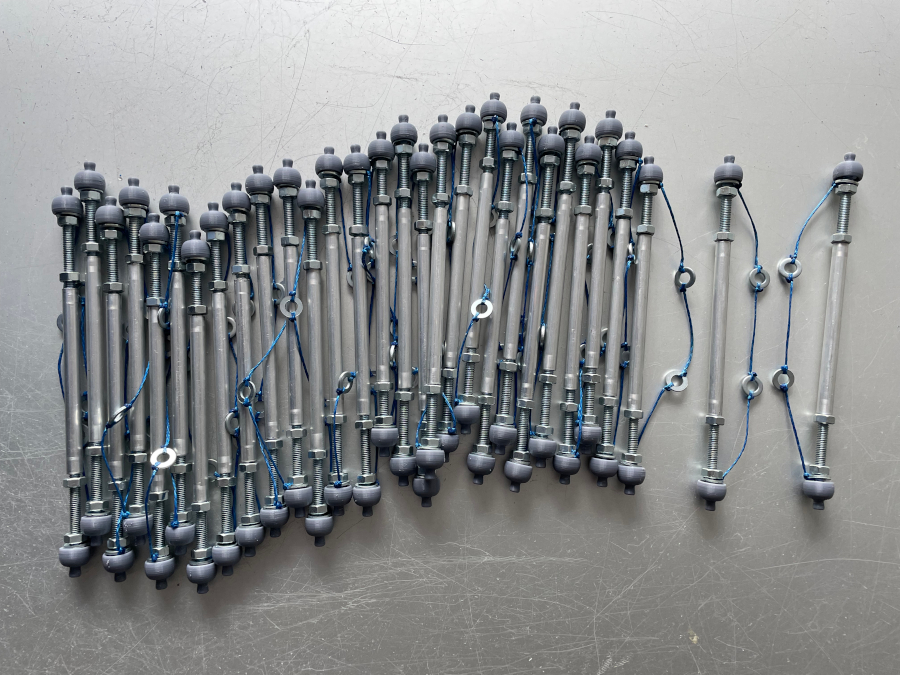
Projects:
2024-07-23: "Bouncy Wooden Sphere": what you can do with a discarded bed2024-04-23: "Twisted Torque": tied into a permanent twist
2023-03-27: "Easy 30-Push Sphere": one simple element
2022-10-05: "Glass and LED": going big and colorful
2022-09-29: "Fascia": dancing with tensegrity
2022-08-30: "Mitosis": the four-three-two tensegrity
2022-08-04: "Push Bolts for the People": finalizing design and getting it out there
2022-06-22: "Head to Head Push Bolt": M5 and M6 bolts symbiosis
2022-05-30: "Hiding Knots": bump up the aesthetics
2022-05-25: "Innovation with 3D Printer": the push bolt
2021-12-02: "Headless Hug": breaking a rule for the sake of symmetry
2021-10-28: "Rebuilding the Halo": finally got it right
2021-10-20: "Convergence": growing and reconnecting
2021-07-27: "120-Strut Brass Bubble": taking the next step up in complexity
2021-05-26: "30-Strut Brass Bubble": bouncing spherical tensegrity
2021-04-08: "Bow Tie Tensegrity": better bend resistance
2021-03-29: "Six Twist Essential": what if more hands could see?!
2021-01-25: "Minimal Tensegrity": no more tension lines than absolutely necessary
2021-01-18: "Degrees of Freedom": first adjustable hybrid tensegrity
2021-01-11: "Fractal Experiment": a tensegrity of tensegrities
2020-12-09: "Axial Tension": pretensing what is already pretenst
2020-11-02: "Halo by Crane - Part 2": the strengthening
2020-10-26: "Halo by Crane - Part 1": assembly complete but strength lacking
2020-10-12: "Brass and Tulips": a tight and strong tensegrity tower
2020-08-10: "Prefab Tension Tower": the tower of eight twists
2020-07-27: "Elastic Bubble": building with elastic ease
2020-07-13: "The Twist Sisters": left-handed and right-handed
2020-07-06: "Radial Tension": Pulling towards the middle
2020-06-22: "Diamond of Tension": Four pulls for every push
2020-06-15: "Prefab Tension": Separating compression from tension